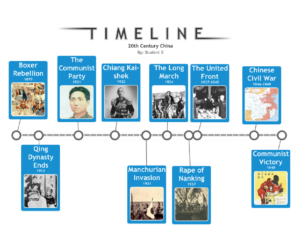I teach history. Even as a boy, I was a history nerd. Recently, I was enjoying the company of friends at a party. My buddies all have college degrees and are successful in their chosen professions. A historical topic surfaced. I decided to conduct a little wine-inspired experiment. I just listened to them pontificate about a subject I knew a lot about. This is generally not my disposition when vino veritas is factored in. What took place was fascinating. While my friends had a working understanding of the topic, their background chronology was out of whack which, of course, did a serious number on their understanding.
If intelligent adults struggle with context on what would seem common historical knowledge, it would be foolhardy to assume that k-12 students, aside from the budding history nerds, would have a clue about the order of events. Contextual ignorance does not just apply to events, but also processes. Students in math, science, and language arts must understand many processes like the quadratic equation, the scientific method, and MLA citation. Chronological awareness with such concepts breeds confidence, which is crucial to engagement. Let’s inspire some of that awareness with a cool virtual timeline builder.
Last semester, my World Civ class was embarking on a unit addressing 20th Century Chinese history. My kids knew virtually nothing about this important topic. I decided the first step in this academic journey would be for my kids to create virtual timelines. Here’s the prompt I gave students, which can easily be altered to match concepts or processes in other subjects:
- I gave them a starting point (The Boxer Rebellion 1899) and an ending point (The Communist Victory 1949).
- I challenged them to plot seven important events in between.
- I required that each event include a title, the year it took place, an explanation as to why the event was important, and a public domain or creative commons image. Imagine some of the cool imagery students could find for quadratic equations and the scientific method!
Template
The Problem:
Contextual ignorance undermines engagement.
The Solution:
Challenge students to build virtual timelines with ReadWriteThink.
What you can do Tomorrow:
- Create your own timeline on ReadWriteThink.
- Select an important topic.
- Formulate small discussion groups.
When students are able to place events or processes in context, they become confident and engaged academic explorers.
Listen to “67-Context is Key to Engagement…let ReadWriteThink Help” on Spreaker.
